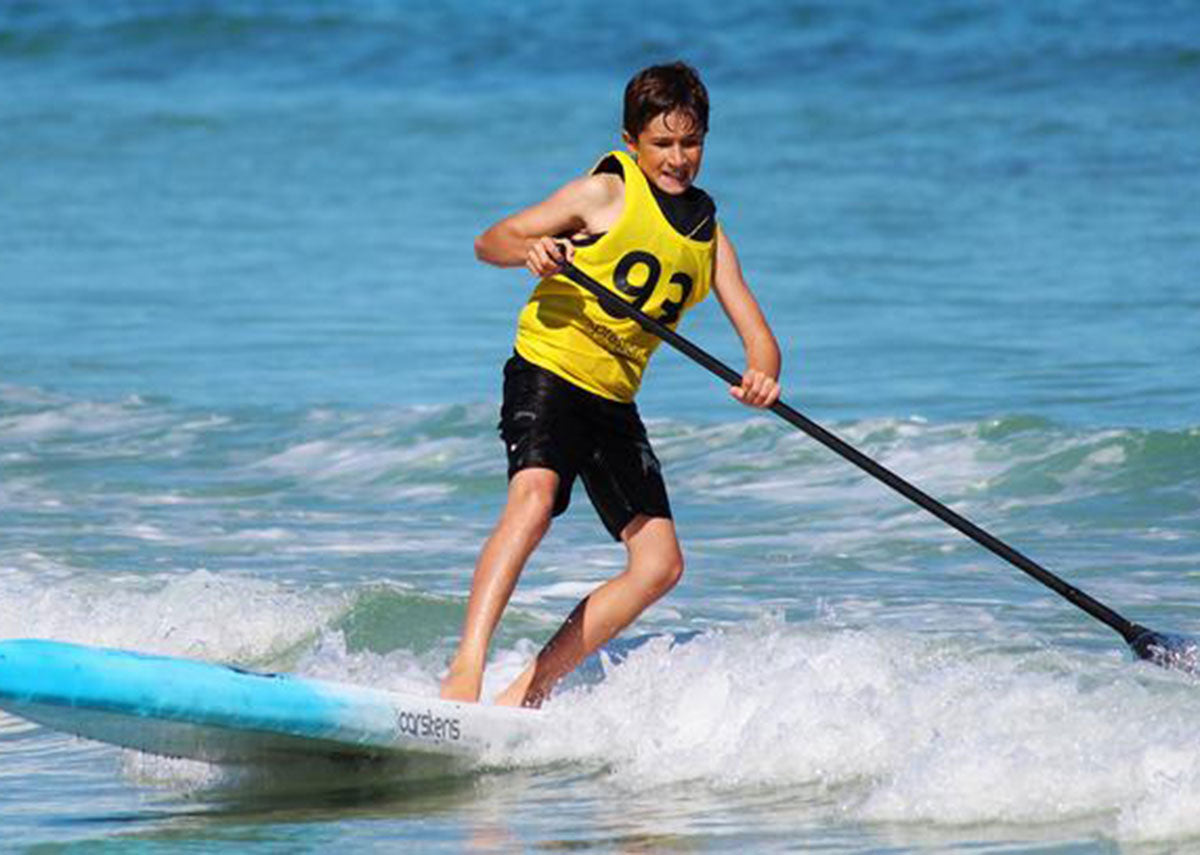Sport in Focus: Paddle Surfing
| Apr 08 , 2019
Stand up paddle surfing (or SUP as it is more commonly known) is a relatively new sport - but it's not an easy one. Just because you can surf, doesn't mean you will take to SUP surfing as easily. Surfing and SUP surfing are two entirely different animals and the sooner you accept this, the better. However, SUP surfing can be very rewarding and worth the effort, so here are our top tips to help you to learn to SUP surf:
It all starts with the board
Getting the right board, to begin with, can make all the difference. Inflatable board, raceboards and touring boards are not built for this type of surfing and will not help you as a beginner. So, when you are choosing a surfboard to start with you want one that is not only buoyant but stable. So, you will need to look for a board which is between eight to ten-foot-long, about 30 inches wide and with a volume between 140 and 200 litres. You also need to examine the 'rocker' which is the name for the bottom curve of the board which goes from the nose to the tail as this will help you not to bury the board at the bottom of every wave.
If all this sounds a little confusing, don't worry - there will be people around at the surfboard shop with the knowledge and experience to be able to help you choose the right board. There are also a lot of SUP events that take place in the UK and if you go along, you may be able to try a couple of boards out which will help you make a more informed decision about the one you want to purchase.
Now you need to paddle out
So, you have bought the right board and you have it leashed to you - it is time to get out on the waves. Before you head off into the vast blue ocean though, it is best to have a quick look at the waves so that you can get a feel for what the sea is doing. This is a critical step if you are a beginner SUP surfer, as you want to choose a location which has gentle waves and not many people about. You should also keep a look out for other hazards such as swimmers, submerged rocks or a shallow break on the beach.
Once you are ready to start, walk out until you are waist-deep in the water before you hop on your board. You can then carry on paddling out on your knees or lying flat on the board as this will be easier. You can stand up and paddle out if you wish, but this will be quite hard at this stage. You will need to paddle hard, making sure you keep your weight on your back foot to make sure the board gets over the sea foam. Leaning back while you are paddling also helps to keep the momentum going. Keep a firm grip on your paddle as well, as you don't want to have to head back to shore to retrieve it.
Catching the waves
The first challenge you will face when SUP surfing is just getting the board pointed in the right direction. If you start slowly and are methodical though, you should soon find it gets easier. The fact that you are standing up to paddle also gives you an advantage as you can see the waves coming in, giving you time to choose the one that is best for you. Make sure you are not in a hurry to catch one, or you will probably find yourself falling over before it reaches you - instead you should turn into the wave as it approaches. Paddle parallel to the wave before taking a few hard strokes in the direction you want to turn.
Riding the waves
Now that you have got to the point of actually catching the wave, actually riding it is easiest of all - especially if you have been surfing before. The key is to practise, practise, practise as the more time and effort you put in, the better you will become at SUP surfing.
Hopefully, this has given you the confidence to go out and try paddle surfing - it's an awesome sport. Whatever outdoor activity you decide to engage in this year, always make sure you have your towel changing robe with you - as it will not only keep you warm and dry but protect your dignity too.

